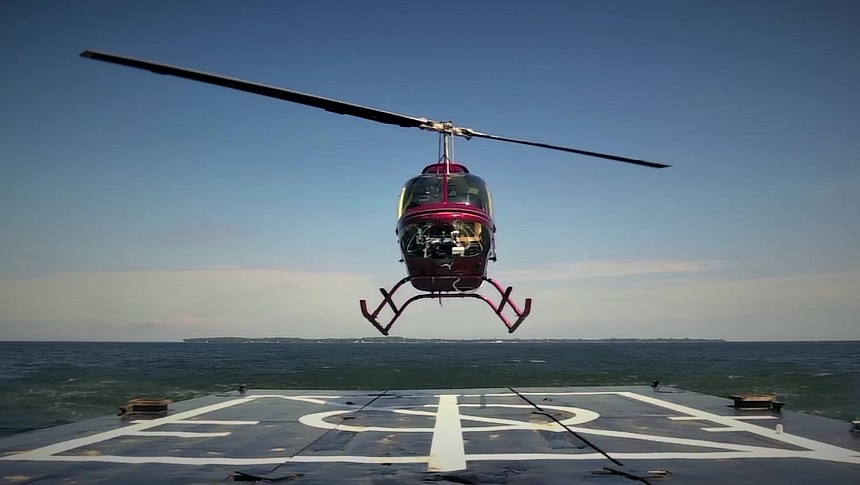In just two years from now, the first eVTOLs (electric vertical take-off and landing) operating as air taxis are expected to enter service in the US and other parts of the world. This is a huge breakthrough, but the ultimate goal is to fly aircraft that are not just emissions-free but also completely autonomous. This goes for both civilian operations and the military.
Air taxis that fly without a pilot onboard, large autonomous aircraft that carry precious cargo between military fields, and even autonomous extraterrestrial rovers are all part of a futuristic vision that seems to belong in video games or Sci-Fi movies. However, this future might be closer than we think. The US Air Force (USAF) is ready to take autonomous flight capabilities to the next level through the AFWERX program for game-changing technology.
USAF's main partner for this ambitious goal is Near Earth Autonomy, a company developing flight systems for uncrewed operations for over a decade. So far, this advanced technology has been integrated into more than 100 aircraft and has proven its reliability over more than 6,000 flight hours.
The goal is exciting, but the process is a tedious one. Near Earth and AFWERX will work together to set up a detailed accreditation process for autonomous aircraft assurance. This future assurance connected to UAVs (unmanned aerial vehicles) will need to be the equivalent of commercial Part 135 crewed operations (less than one accident to 100,000 hours of flight).
This new collaboration proves that USAF is determined to integrate autonomous aerial transport sooner than later. Uncrewed cargo brings unique advantages to any domain but is particularly suitable for military operations. This is because the task of resupplying troops often has to deal with challenging environments and the lack of adequate infrastructure, in addition to the inherent threats that put human lives at risk.
While working on the formal accreditation process, New Earth will also create a specific Modular Open System Architecture (MOSA) for future air logistics within the military.
The New Earth technology includes a sensor suite for mapping, localization, and geo-registration and a collision detection and avoidance system capable of identifying and classifying even challenging potential obstacles such as small wires.
GPS Denied Navigation is another primary feature enabling the localization of an aircraft even in unconventional environments, such as the underground. The aircraft fitted with the New Earth systems can also follow detailed flight paths autonomously and select the safest landing areas. Plus, this technology enables complex operations such as coordinating multiple aircraft or landing on a ship in challenging weather conditions.
If you'd like to take a closer look at this autonomous flight technology, you can visit the AUVSI Xponential Event in Denver, Colorado, starting May 9, where Near Earth will also be exhibiting.
USAF's main partner for this ambitious goal is Near Earth Autonomy, a company developing flight systems for uncrewed operations for over a decade. So far, this advanced technology has been integrated into more than 100 aircraft and has proven its reliability over more than 6,000 flight hours.
The goal is exciting, but the process is a tedious one. Near Earth and AFWERX will work together to set up a detailed accreditation process for autonomous aircraft assurance. This future assurance connected to UAVs (unmanned aerial vehicles) will need to be the equivalent of commercial Part 135 crewed operations (less than one accident to 100,000 hours of flight).
This new collaboration proves that USAF is determined to integrate autonomous aerial transport sooner than later. Uncrewed cargo brings unique advantages to any domain but is particularly suitable for military operations. This is because the task of resupplying troops often has to deal with challenging environments and the lack of adequate infrastructure, in addition to the inherent threats that put human lives at risk.
While working on the formal accreditation process, New Earth will also create a specific Modular Open System Architecture (MOSA) for future air logistics within the military.
The New Earth technology includes a sensor suite for mapping, localization, and geo-registration and a collision detection and avoidance system capable of identifying and classifying even challenging potential obstacles such as small wires.
GPS Denied Navigation is another primary feature enabling the localization of an aircraft even in unconventional environments, such as the underground. The aircraft fitted with the New Earth systems can also follow detailed flight paths autonomously and select the safest landing areas. Plus, this technology enables complex operations such as coordinating multiple aircraft or landing on a ship in challenging weather conditions.
If you'd like to take a closer look at this autonomous flight technology, you can visit the AUVSI Xponential Event in Denver, Colorado, starting May 9, where Near Earth will also be exhibiting.







